Talk 48: The Rise and Fall of Empires and States: A View Through the Lens of the Board of Internalized Characters
Greetings,
We will first distinguish between civilization on the one hand and empires and states on the other. According to Samuel Huntington [author of the book "The Clash of Civilizations,"] "Civilization is the broadest cultural entity. Civilization is the highest degree of human identity that distinguishes different groups of people. As history shows us, he believes, civilizations are "a superpower "In history that survives the many upheavals that cultures, peoples and countries can go through – ideological, behavioral, governmental, etc. Civilizations differ from each other in their basic values and basic views and assumptions in a variety of questions and ideas [see Wikipedia].
An empire, on the other hand, is defined as a political sovereignty, for example a state, which controls large areas inhabited by populations that differ ethnically and culturally from its ruling center [see Wikipedia]
In this blog we will discuss the rise and especially the fall of empires and states and we will also try to examine this through the lens of the board of internalized figures in the individual building his social self and the dominant figures in this board.

Let's first mention, as in any conversation, the model we propose for "self". First we note that in our model the self includes most of the components of the human soul. The model distinguishes between the "primary self", or the "initial self" which is in fact the basic biological nucleus consisting of a number of innate structures and subject to increasing development during life, this self includes the emotional and cognitive instinctive parts of the person. The exact structure of the primary self and the relationship between its parts still requires clarification [see previous conversations].
The primary self is using the memory stores and abilities of cognition, emotion and more. On another hand, "social self" [consisting of "secondary selves"] is being built during the whole life, and represents an epistructure that develops during the exposure of the person for social influence, and consists of the internalization of figures significant to the person, originating from external groups or even imaginary groups (related, for example, to a story, myth, film, etc.) that greatly influenced the person. It is possible that it can also include the personification of objects and agencies that are extremely important to a person.
We will note here that parts of the self are conscious, while other parts can be unconscious.
Below we will discuss the structure of the social self: it consists of "secondary selves" that include the following types: 1) the variety of representations of the "Me" that originate from attitudes and feelings towards the self and its representations in different periods of life 2] representations of internalized characters that originate from the significant characters that the person was exposed to during his life, but as mentioned there may also be imaginary characters represented in books, movies, etc. that had a great impact on the person. 3] internalized representations of "subculture" [subculture refers to social influences in the environment in which the person lives and are not necessarily related to a particular person].
We call the social self metaphorically the "director of characters" or more precisely the "director of internalized characters", or the "board of characters". We note that in this internalized board of directors, there is usually a hierarchy in which there are more influential and dominant figures that we metaphorically called "the dictator selves" or "the internal dictators" and these set the tone and even censor and determine which contents, positions and behaviors cannot be included in the board of figures. We note that the person as a whole is not usually aware of the influence of the internalized characters' board and recognizes its influence as arising from his own desires and attitudes. We will also note that, as a general rule, the board is very dynamic and there are constant struggles and power relations between the internalized characters that make it up regarding the positions they will express, with the internal dictator or dictators usually dictating the tone.
This is how it is possible to internalize various external characters that influence the person in the "Board of Internalized Characters", but we emphasize again that usually the most important internalization is that of what we called the "dictator self". Here it is about internalizing a character that has a great influence and shapes the person for good and/or bad, that has a great influence on the panel of internal characters that build the social self. The dictator's attitudes play a central role in making decisions about internalizing information and characters. He decides whether to reject the internalization or, if accepted, in what form it will be internalized. In other words, in a sense, we assume that this influential figure is also a form of internal censorship.
It should be emphasized that we are not talking or raising concrete hypotheses about the presence of introverted characters in the inner world of the individual as a kind of "little people inside the brain", but rather in their representation in different brain areas whose nature and manner of representation in the brain still require further research. We will also note that although we call this figure a "dictator", with the exception of a certain type, his characteristics are not the same as those of a dictatorial ruler in a certain country, but rather that this figure is dominant and influential among the "director of figures" or "directorate of figures".

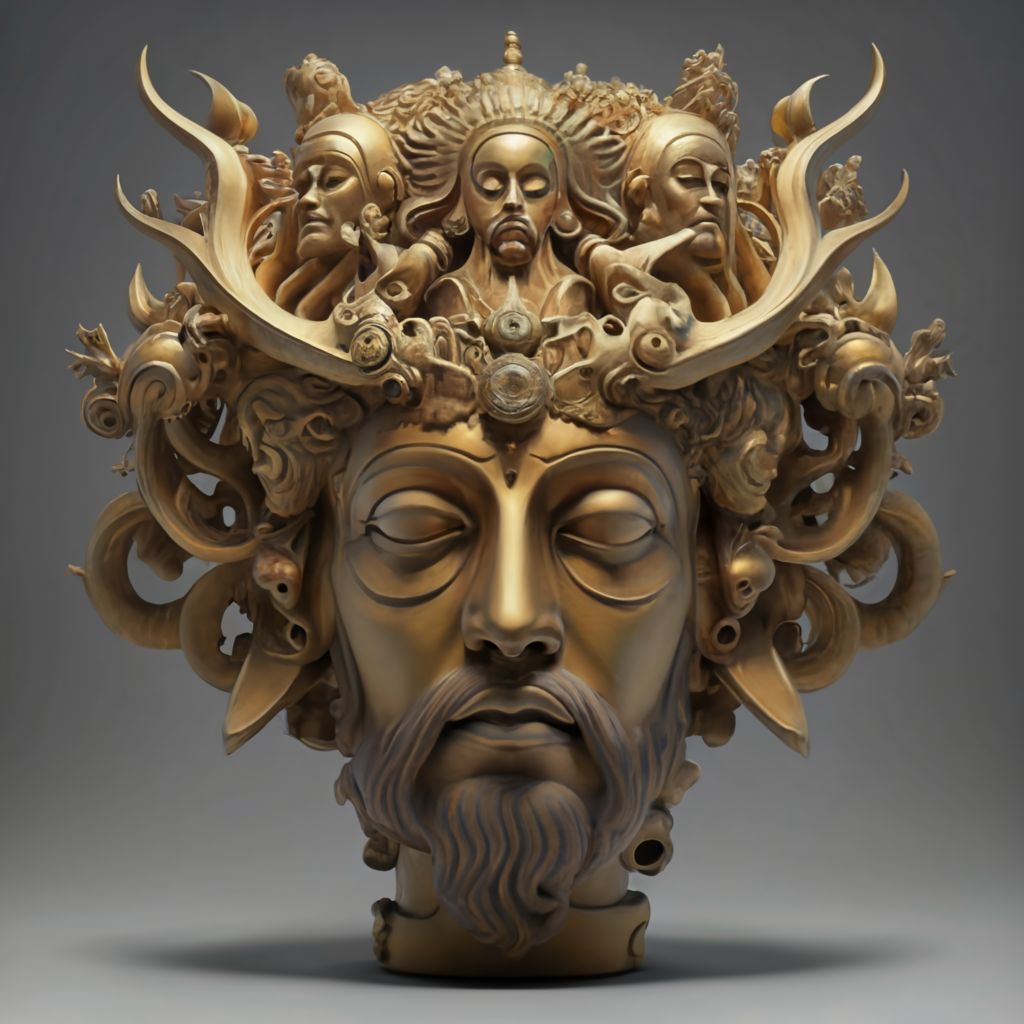
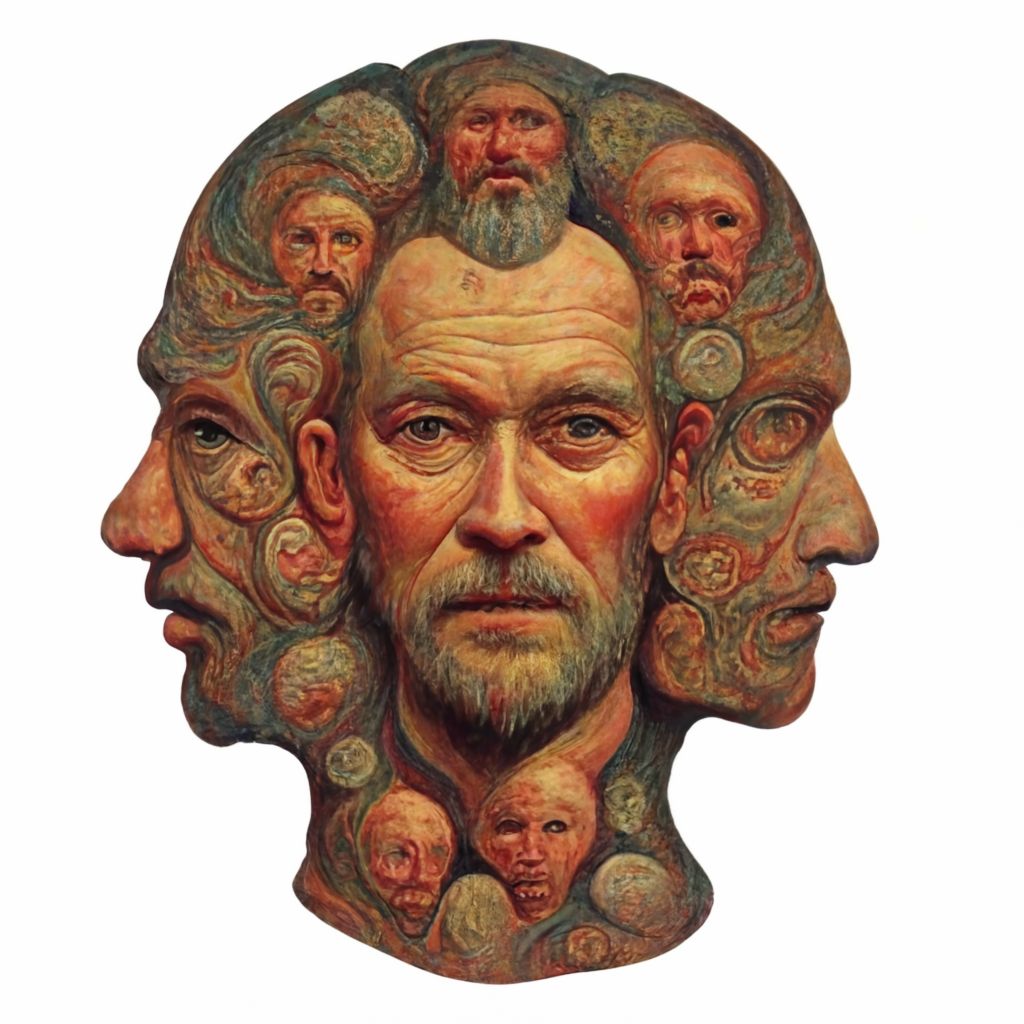
This model therefore holds that the social self consists of "internalized key figures [usually human], usually referring to the significant people in a person's life who have played a central role in shaping the individual's beliefs, values and self-concept. These figures may include family members, friends, mentors, teachers or any other influential person who left a lasting impression on the person's psyche.
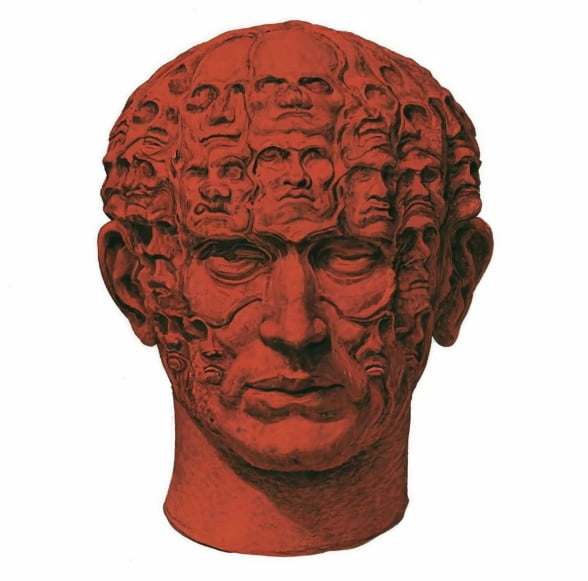
Sometimes, these will also include historical, literary and other figures that left a noticeable mark on the person and were internalized by him. The term "internalized" implies that the influence of these key figures has been absorbed and integrated into the individual's thoughts, attitudes, and behaviors. This internalization occurs through a process of observing, interacting with, and learning from these important people. As a result, the individual may adopt certain values, perspectives, and approaches to life that mirror those of the influential figures. These internalized figures can serve as guiding forces in decision-making, moral thinking and emotional regulation. Positive influences can contribute to a person's well-being, security and resilience, while negative influences can lead to internal conflicts or challenges in personal development.
Although the person is usually not aware that his actions and attitudes stem from the board of intrernalized characters, recognizing and understanding the influence of internalized key human characters is essential for self-awareness and personal growth. It allows people to evaluate the values they hold, question assumptions, and make informed decisions about the kind of person they want to be. In addition, the awareness of these internalized influences can contribute to building healthier relationships and fostering positive relationships with others.
We will now move on to our topic: the fall of empires.
Empires rise and fall as a result of complex interrelationships of various factors spanning political, economic, social and cultural dimensions. Here is a breakdown of some main reasons [the text below was written with the help of Chat GPT after we went through and examined the material that came up]:
1. Political factors:
Leadership: The effectiveness of leadership plays a crucial role. Strong leaders can consolidate power and expand territories, while weak or corrupt leadership can lead to internal conflicts and division.
Governance: Effective governance structures can help manage diverse territories, but ineffective governance can lead to unrest and rebellion.
Military Strength: Empires often rise on the back of military conquests, but maintaining a strong military becomes essential for defense and expansion. Military overstretch or defeats in wars can weaken an empire.
2. Economic factors:
Wealth and Resources: Economic prosperity fuels imperial expansion. Empires often exploit resources from conquered territories, but overexploitation or mismanagement can lead to economic decline.
Trade: Control of trade routes and access to markets can increase economic growth, but changes in trade patterns or loss of control over vital trade routes can weaken empires.
Heavy taxation to finance military systems or extravagant lifestyles of rulers may lead to dissatisfaction among the population. Failed economic management can also lead to inflation or debt crises.
3. Social factors:
Ethnic diversity: Empires are often composed of diverse ethnic and cultural groups. Maintaining cohesion between these groups can be challenging, and ethnic tensions or discrimination can lead to internal conflicts.
Social cohesion: Strong social ties and a sense of identity can contribute to stability, but inequality or social stratification can lead to unrest.
Demographic changes: population growth or decline, immigration and urbanization can all affect the stability of empires.
4. Cultural factors:
Ideology and religion: religious or ideological factors can play a significant role in unifying or dividing populations. Religious conflicts or the spread of alternative ideologies can weaken imperial control.
Cultural exchange: Empires often allow for cultural exchange, but cultural clashes or the imposition of one culture on another can lead to resentment.
Intellectual innovation: Companies that encourage intellectual and technological innovation can gain an advantage, but stagnation or resistance to change can lead to decline.
5. External pressures:
Competition with other powers: Rivalry with neighboring countries or emerging powers can pose significant challenges to empires.
Environmental factors: natural disasters, climate change or ecological degradation may undermine agricultural productivity and economic stability.
6. Internal dynamics:
Inheritance crises: conflicts over inheritance can lead to power struggles and instability.
Bureaucratic corruption: Corruption within the bureaucratic apparatus can undermine governance and erode public trust.
In general, the rise and fall of empires is often the result of a combination of these factors, with internal weaknesses often exacerbated by external pressures. In addition, the actions of individual leaders can also play a significant role in shaping the fate of empires.
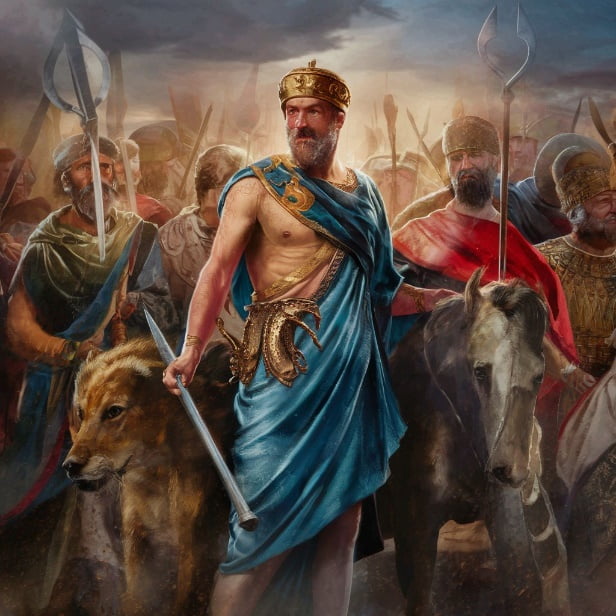
Let's take the example of the Roman Empire, one of the most famous empires in history:
The rise of the Roman Empire:
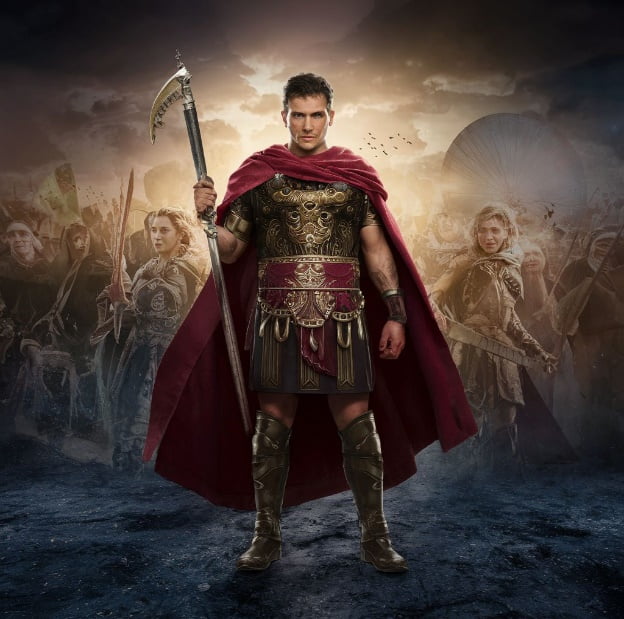
1. Political factors:
◦ Leadership: Rome enjoyed talented leaders such as Julius Caesar and Augustus who expanded its territories through military conquests.
◦ Governance: The Roman system of government, including the establishment of provinces and a developed legal system, helped manage the vast empire.
◦ Military strength: The Roman army was highly organized and disciplined, enabling successful conquests and establishing control over territories.
2. Economic factors:
◦ Wealth and resources: Rome took advantage of the resources of its conquered territories, including land, slaves and precious metals, which contributed to its economic prosperity.
◦ Trade: Control of trade routes in the Mediterranean allowed economic growth and cultural exchange.
◦ Taxation and Financing: Rome levied heavy taxes to finance its military systems and maintain infrastructure, but excessive taxation and financial mismanagement contributed to economic stress.
3. Social factors:
◦ Ethnic Diversity: The Roman Empire included diverse ethnic groups, and while Roman citizenship helped foster a sense of unity, tensions often existed between Romans and non-Romans.
◦ Social Cohesion: The Roman system of patronage and citizenship provided stability, but inequality and social unrest were persistent issues.
◦ Demographic changes: The empire experienced an increase and decrease in population, as urbanization led to social and economic changes.
4. Cultural factors:
◦ Ideology and Religion: The adoption of Christianity as the state religion in the 4th century AD had a profound effect on the empire, leading to both unity and division.
◦ Cultural exchange: Rome absorbed and assimilated diverse cultures, but cultural clashes also occurred, especially with the rise of Christianity.
◦ Intellectual innovation: Rome made significant contributions to art, literature, engineering and law, but intellectual stagnation in later periods contributed to decline.
The fall of the Roman Empire: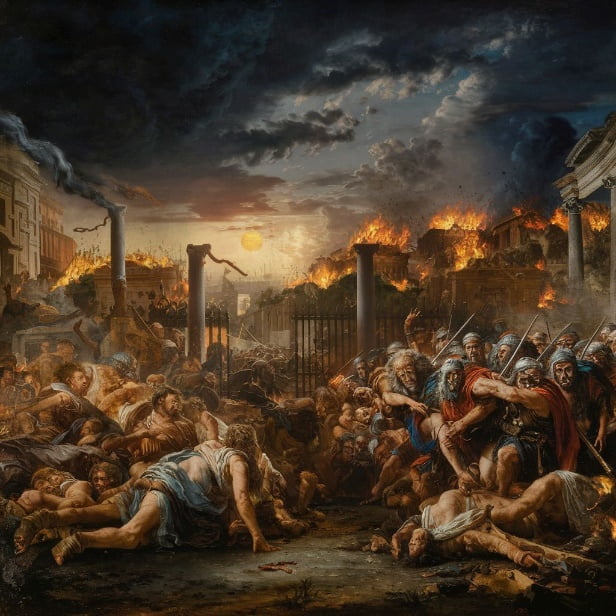
1. Political factors:
◦ Leadership: Inefficient and corrupt leadership, as well as power struggles and succession crises, weakened the central government.
◦ Governance: administrative inefficiency and the inability to effectively manage the vast empire contributed to its fragmentation.
◦ Military weakness: Rome faced increasing pressure from external invasions of Germanic tribes, capital invasions and internal conflicts, which led to the weakening of the army.
2. Economic factors:
◦ Economic decline: A decline in agricultural productivity, inflation and disruptions in trade routes contributed to economic decline.
◦ Taxation and financing: Heavy taxation and currency corruption undermined economic stability and contributed to social unrest.
3. Social factors:
◦ Ethnic tensions: Ethnic tensions between Roma and non-Roma, as well as social unrest among the lower classes, weakened social cohesion.
◦ Decline of urban centers: Many urban centers declined due to economic depression and population depletion, leading to a loss of cultural and economic vitality.
4. Cultural factors:
◦ Religious division: The rise of Christianity led to religious conflicts and division within the empire, contributing to social fragmentation.
◦ Intellectual stagnation: The decline of intellectual and cultural innovation weakened Rome's ability to adapt to changing circumstances.
5. External pressures:
◦ Barbarian Invasions: Invasions by Germanic tribes and other nomadic peoples put increasing pressure on the empire's borders, eventually leading to its collapse.
In conclusion, the rise and fall of the Roman Empire was influenced by a complex interrelationship of political, economic, social and cultural factors, as well as external pressures. While Rome enjoyed centuries of dominance, internal weaknesses and external threats eventually led to its decline and eventual collapse.
Let's take for example another case study: the fall of the Tang Dynasty, which ruled China between 618-907 AD. It is a complex historical event with various contributing factors. Here are the factors that led to the decline and ultimately the fall of the Tang Dynasty:
Internal conflicts and political instability:
Rebellions and Civil Wars: The second half of the Tang Dynasty was characterized by many rebellions and civil wars, such as the An Lushan Rebellion (755-763) and the Huang Chao Rebellion (874-884). These conflicts weakened the control of the central government and drained resources.
Intrigues and power struggles: Internal power struggles and court intrigues among the aristocracy and eunuchs further destabilized the political landscape, leading to a lack of effective governance.
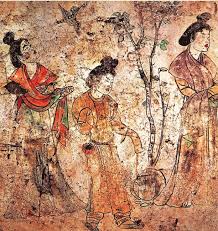
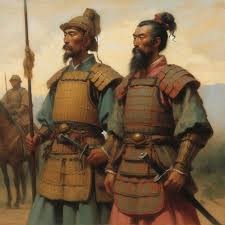
Economic challenges:
Fiscal mismanagement: The Tang dynasty faced economic challenges due to excessive government spending, corruption, and ineffective tax collection. This led to financial stress and economic instability.
Land distribution: Unequal land distribution and the concentration of wealth in the hands of the elite contributed to social unrest and economic disparities within the empire.
Military weakness:
Loss of control over the Safar regions: The Tang dynasty struggled to maintain control over its vast territorial holdings, especially in the Safar regions. Relentless military systems and border defense efforts drained the empire's resources.
Decline of the Imperial Army: The effectiveness of the Tang military declined over time due to factors such as corruption, lack of discipline, and the rise of powerful regional warlords who challenged the central government.
Social unrest and peasant revolts:
Peasant Discontent: The rural population suffered from heavy taxes, forced labor and land expropriation, which led to widespread discontent among the peasants.
Rebellions and Uprisings: Peasant rebellions, such as the An Lushan and Huang Chao rebellions mentioned above, as well as other local rebellions, destabilized the empire and further weakened the control of the central government.
Natural disasters and famine:
Natural Disasters: The Tang Dynasty faced a series of natural disasters, including floods, droughts, and famine, which exacerbated social and economic hardships.
Impact on governance: The government's inability to respond effectively to these crises eroded public confidence and highlighted the empire's vulnerability.
Foreign invasions:
External Threats: The Tang Dynasty faced invasions from neighboring powers, such as the Tibetan Empire and the Uyghur Khaganate, which put additional pressure on the empire's military and resources.
Cultural and intellectual deterioration:
The loss of cultural flourishing: The later years of the Tang dynasty saw a decline in cultural and intellectual achievement as resources were diverted to military systems and internal conflicts.
In summary, the fall of the Tang Dynasty was a culmination of internal strife, economic challenges, military weakness, social unrest, natural disasters, foreign invasions, and cultural decline. These factors combined to weaken the foundations of the empire and ultimately led to its downfall.
To the above we will also add that the advancement of technology and ecological disasters on Earth can certainly play a significant role in the rise and fall of empires.
Technological progress:
Military Technology: Technological advances in weapons, armor, and military tactics can give an Empire a significant advantage over its rivals. For example, the development of iron weapons and sophisticated siege engines played a crucial role in the expansion of many ancient empires.
Communication and Transportation: Improvements in communication, such as the invention of writing systems and later printing, facilitated the administration of large areas and the dissemination of information. Similarly, advances in transportation, such as the construction of roads and later railroads, enabled the rapid movement of troops and goods, strengthening imperial control.
Agricultural Innovation: Innovations in agriculture, such as the introduction of new crops, irrigation systems, and agricultural mechanization, can lead to increased food production and population growth, and support the expansion and stability of empires.
Trade and commerce: Technological advances in navigation, shipbuilding, and banking can facilitate long-distance trade and economic growth, contributing to the prosperity of empires.
However, while technological advances can bring benefits to empires, they can also pose challenges. For example, reliance on certain technologies may lead to vulnerabilities if they become obsolete or if competitors develop superior technologies.
Ecological disasters on Earth:
Natural disasters: earthquakes, volcanic eruptions, floods and droughts can cause widespread destruction, leading to economic decline, social unrest and even the collapse of empires. For example, the eruption of Mount Vesuvius in 79 AD significantly affected the Roman Empire, especially the city of Pompeii.
Climate change: Long-term changes in climate patterns can have profound effects on agricultural productivity, water resources, and the frequency of extreme weather events, all of which can undermine empires that depend on agriculture.
Epidemics: Outbreaks of infectious diseases can devastate populations, disrupt economic activity and destabilize social and political stability. The Antonine Plague (165-180 AD) and the Justinian Plague (541-542 AD) are examples of plagues that contributed to the decline of the Roman and Byzantine Empires, respectively.
Environmental degradation: Human-caused environmental damage, such as deforestation, soil erosion and pollution, can have long-term consequences for ecosystems and societies, leading to resource scarcity and social upheaval.
In conclusion, technological progress can enhance and challenge the stability and prosperity of empires, while Earth's disasters, whether natural or human, can have significant and sometimes catastrophic effects on empires, shaping their rise and fall.
Now, if we examine the complex dynamics behind the rise and fall of empires, relying on historical, sociological and environmental theories, the rise and fall of empires have long caught the eyes of historians, sociologists and researchers from different disciplines.
While many theories have been proposed to explain these phenomena, ranging from political and economic factors to social and environmental factors, a comprehensive understanding requires an integrative approach. of insights from different theoretical frameworks in order to decipher the complicated web of forces shaping the paths of empires throughout history.
A theoretical framework:
Political theories:
Classical theories, such as those proposed by Polybius and Machiavelli, emphasize the role of effective leadership, governance structures, and military capability in empire building.
Marxist theories emphasize the importance of class struggles, imperialism and exploitation in the rise and fall of empires.
Economic theories:
Dependency theory emphasizes the exploitative nature of imperial economic relations, where core regions extract resources from peripheral territories.
Modernization theory assumes that economic development and industrialization contribute to the rise of empires, while economic stagnation or decline can lead to their downfall.
Sociological theories:
Structural functionalism emphasizes the role of social cohesion, institutions and norms in maintaining imperial stability.
Conflict theory emphasizes the role of social inequality, ethnic tensions, and class struggles in undermining imperial cohesion.
Cultural theories:
Cultural diffusion theory suggests that empires arise through the spread of culture and ideas, fostering unity among diverse populations.
The theory of the clash of civilizations assumes that cultural and religious differences contribute to conflicts between rival empires and civilizations.
Technological theories:
Technological determinism claims that advances in military, transportation and communication technology play a central role in the building and downfall of empires.
Social construction of technology theory emphasizes the social and cultural factors that shape technological innovations and their impact on empires.
Environmental theories:
Environmental determinism claims that ecological factors, such as climate change, natural disasters and resource depletion, influence the rise and fall of empires.
Ecological Marxism examines the dialectical relationship between human societies and the natural environment, and emphasizes how environmental degradation can contribute to imperial degradation.

Below is a reference to the thesis that was written about the analysis of the rise and fall of empires and in contrast the longevity of the oldest societies in the world" by On Sang Ching.
Ching, O. S. (2018). An Analysis into the Rise and Fall of Empires and the Longevity of the World's Oldest Companies. Master's Thesis, Faculty of Education and Welfare Studies, Åbo Akademi, Finland.
GPT PDF summarizes the thesis [after reading it carefully and going through the summary below of course]:
A] The collapse of the great empires can be attributed to various factors:
Overstretching: One common factor leading to the downfall of empires is overstretching their resources and territories. The British Empire, for example, grew too large to handle, which eventually led to its decline.
Internal Weaknesses: Internal weaknesses such as corruption, internal conflicts and political instability can weaken empires from within. The Tang Empire weakened as its military weakened, while the Romans faced internal politics and corruption issues.
Economic factors: failed economic management, depletion of resources and unsustainable economic models can contribute to the collapse of empires. The Soviet Union's focus on a centralized economy and lack of entrepreneurship led to its downfall.
Resistance and independence movements: Colonial peoples' resistance and independence movements can also lead to the collapse of empires. The American Revolution and the Indian independence movement are examples of colonies that broke away from empires.
Lack of Adaptability: Empires that fail to adapt to changing circumstances, evolving ideologies, or global changes may find it difficult to sustain themselves. The British Empire's focus on trade and neglect of the will of the colonial peoples contributed to its downfall.
Complexity and Bureaucracy: The complexity of running large empires, including bureaucracy, rules and regulations, can be overwhelming and hinder effective governance. Without proper systems, empires can struggle to function effectively.
Ideological factors: ideological rigidity, may lead to economic stagnation and social dissatisfaction, and eventually lead to the collapse of the empire.
In summary, the collapse of great empires is often the result of a combination of internal weaknesses, external pressures, economic challenges, resistance movements, and failure to adapt to changing circumstances. These factors, when left untreated, can contribute to the downfall of even the most powerful empires in history.
B] On the other hand, On Sang Ching believes that small organizations, such as family businesses, can show extraordinary longevity and resilience over hundreds of years due to:
Flexibility and adaptability: Small organizations are often more flexible and adaptable compared to large empires. They can respond quickly to changes in the market, society and technology, which allows them to adjust their activities and strategies accordingly.
Less bureaucracy: Unlike large empires burdened with complex bureaucracy, small organizations, especially family businesses, tend to have fewer layers of management and bureaucracy. This efficient structure enables faster decision-making and implementation of changes.
Staying true to core values: Many enduring family businesses maintain a strong connection to their core values, traditions and founding principles. This sense of identity and purpose can guide their decisions and actions, and foster continuity and stability over time.
Community and customer focus: Small organizations often have close ties to their local communities and customers. By prioritizing personalized service, building relationships and responding to local needs, they can create loyal customer bases that sustain their business for generations.
Resilience to external forces: Family businesses that have survived for centuries have likely faced various external challenges, such as wars, economic depressions and social upheavals. Their ability to adapt, innovate and persevere in the face of adversity contributes to their longevity.
Avoiding over-expansion: Unlike empires driven by the desire for constant expansion, small organizations such as family businesses may choose to grow steadily and sustainably. By avoiding over-expansion and focusing on stability, they can maintain their activity for generations.
Essentially, the success and longevity of small organizations, especially family businesses, stems from their agility, cohesive nature, customer-centric approach, adherence to core values, and ability to navigate challenges with resilience and adaptability.
These factors allow them not only to survive but also to prosper over time, and are evidence of the power of continuity and connection in the business world.
This analysis, On Sang Ching believes, offers important lessons for modern organizations seeking to navigate the complexities of today's business landscape. Here are some key points:
Balancing growth and stability: Modern organizations can learn the importance of balancing growth aspirations with the need for stability. Rapid and uncontrolled expansion, such as that of empires, can lead to vulnerabilities and eventual collapse.
Organizations should focus on sustainable growth strategies that prioritize long-term stability.
Adaptability and flexibility: Embracing adaptability and flexibility is essential for modern organizations facing rapid technological advances, changing consumer preferences and global uncertainty. Similar to long-standing family businesses, organizations that can pivot, innovate and respond to market changes are better positioned for longevity.
Adopting core values: maintaining a strong connection to core values and principles can guide decision-making and foster organizational resilience. By staying true to their mission and values, companies can build trust with stakeholders and face challenges with integrity.
Effective governance and bureaucracy: Modern organizations can learn from the fall of empires that are burdened by complex bureaucracies. Streamlining government structures, reducing bureaucracy and promoting effective decision-making processes can improve organizational agility and effectiveness.
Customer-centric approach: Long-standing companies often prioritize customer relationships and community involvement. Modern organizations can benefit from focusing on customer needs, delivering personalized experiences and building strong relationships with their target audience to foster loyalty and longevity.
Learn from history: The saying "those who do not learn from history are doomed to repeat it" emphasizes the importance of studying the successes and failures of the past. Modern organizations can glean valuable insights from historical patterns of empires and long-term businesses to inform their strategic decisions and avoid common pitfalls.
By incorporating these lessons into their corporate strategies, modern businesses can improve their resilience, adaptability and sustainability in an ever-evolving global marketplace. Adopting principles of balance, adaptation, values-driven leadership, effective governance, customer focus and historical awareness can position organizations for long-term success and endurance in the face of challenges and opportunities.
The influence of internalized images in the human brain on the development and fall of societies.
Human society develops in principle in a non-genetic way. The current genetic structure is very similar or in fact the same as that of the ancient man. On the other hand, there is no doubt that human society has developed culturally. The way the characters are internalized in character management has changed over the centuries and this, in our opinion, is due to cultural development. As a general rule, culture includes, among other things, knowledge bases and attitudes.
Let's recall that the influential figure or figures in the directorate of internalized figures are known as the dictator self or selves.
The influential figures in the prehistoric tribe included the leader of the tribe, the shaman, the gatherers, the hunters, the guardians of the fire and more.
These external characters were internalized and served as a basis for managing the internalized characters. We note that these “promary” internalized characters evolved into internalized boards in later generations. For example, the internalized leader of the prehistoric tribe became the internalized leader of the nation, the shaman the significant rabbi in the religious society or the influential spiritual figure in a liberal society and more.
We assume that at the lower developmental stage of society, we will have many more individuals with internalized dictatorial selves, with more closed, "black and white" attitudes (as in a "state dictator" subtype of dictator self), those who will be much more ready to see everyone who does not belong to the "tribe" as an enemy, much more ready to resolve conflicts through confrontation and struggle.
We hypothesize that as society enters a more developed stage, the share of the rigid dictator self with closed attitudes decreases among the population, and we have many more dictator selves scattered among individuals within a society who have relatively open attitudes, those who are more willing to accept diversity in others, tend to resolve conflicts through compromise and are more willing to accept others as potential partners rather than enemies.
However, we have to consider that not all societies on the planet develop at the same time and are at the same stage of social development, and there may even be a retreat at the moment, for example, when a society becomes a dictatorial one, and then the figure of the dictator ruling the country is internalized together with his rigid positions in large parts of the country [in fact, he overrides the previous person’s dictator self within the internal hierarchy of the person’s “directorate”], to supress internalized figures with alternative and more open attitudes. This change has a survival advantage since in a dictatorial state any deviation from the norms and rules may result in significant punishment and even death.
If so, we will tend to have advanced societies that tend to solve problems through compromise (at least a large proportion of people in that society perceive the world that way). On the other hand, we have other societies (which can be geographically close to the previous ones) that are characterized by a majority with rigid dictator selves that are much more inclined to fight, annex new territories and destroy the more developed (more tolerant) societies.
Such a process may eventually lead to the fall of the more tolerant advanced society [state, empire] and be even accelerated if there is a conflict between large parts of the advanced society. It may be expected that in the more developed society there will be still a certain part with more rigid and bellicose dictator selves versus those with flexible internal dictators who tend to compromise, which leads to the splitting of the more developed society and its weakening in the face of the confronting society characterized as mentioned above by a majority of rigid dictator selves who are much more inclined to fight, annex new territories and destroy the more developed society.
From this we conclude that when we come to evaluate the immunity of a society, its militancy or compromise readiness, and its positions, we must take into account the distribution of the types of "dictator selves" among its members.
We suggest, for example, that this information can be drawn in a graph where the X-axis from 0 to 100 percent will be the part represented by a certain type of "dictator self" with certain positions, while the Y-axis is the degree of rigidity (below the X axis) or openness (above the X axis) of a given dictator self. See an example below for a population in which the individuals are divided between those in which the "self-dictator" is A who shows rigidity [rigid attitudes] at varying levels among them, and individuals in whom the "dictator self" is B who shows openness [open attitudes] at a varying level.

We therefore claim that when we come to assess the rise and fall of societies in addition to political, economic, social, technological, ecological and cultural dimensions it is desirable to understand the distribution of the types of the "tyrannical self" among its members and their characteristics.
By the way, some of the surveys conducted today talk about the dispersion of positions among the public [essentially the dispersion of the positions of the dictator self types of the individuals in society] but do not evaluate the dispersion of the rigidity or openness of each position as shown in the graph above.
That's it for now,
yours,
Dr. Igor Salganik and Prof. Joseph Levine
 Prof. Joseph Levine, M.D. is an emeritus associate professor in the Division of Psychiatry, Faculty of Health Sciences, Ben Gurion University in Israel. Prof. Levine is a certified psychiatrist with clinical experience in controlled trials of adult psychiatric disorders and in psychotherapy. He was awarded a NRSAD independent investigator grant for the study of Creatine Monohydrate in psychiatric disorders -- mainly Schizophrenia. He resides and treats patients in Tel Aviv and all of central Israel.
Prof. Joseph Levine, M.D. is an emeritus associate professor in the Division of Psychiatry, Faculty of Health Sciences, Ben Gurion University in Israel. Prof. Levine is a certified psychiatrist with clinical experience in controlled trials of adult psychiatric disorders and in psychotherapy. He was awarded a NRSAD independent investigator grant for the study of Creatine Monohydrate in psychiatric disorders -- mainly Schizophrenia. He resides and treats patients in Tel Aviv and all of central Israel.
Leave a comment